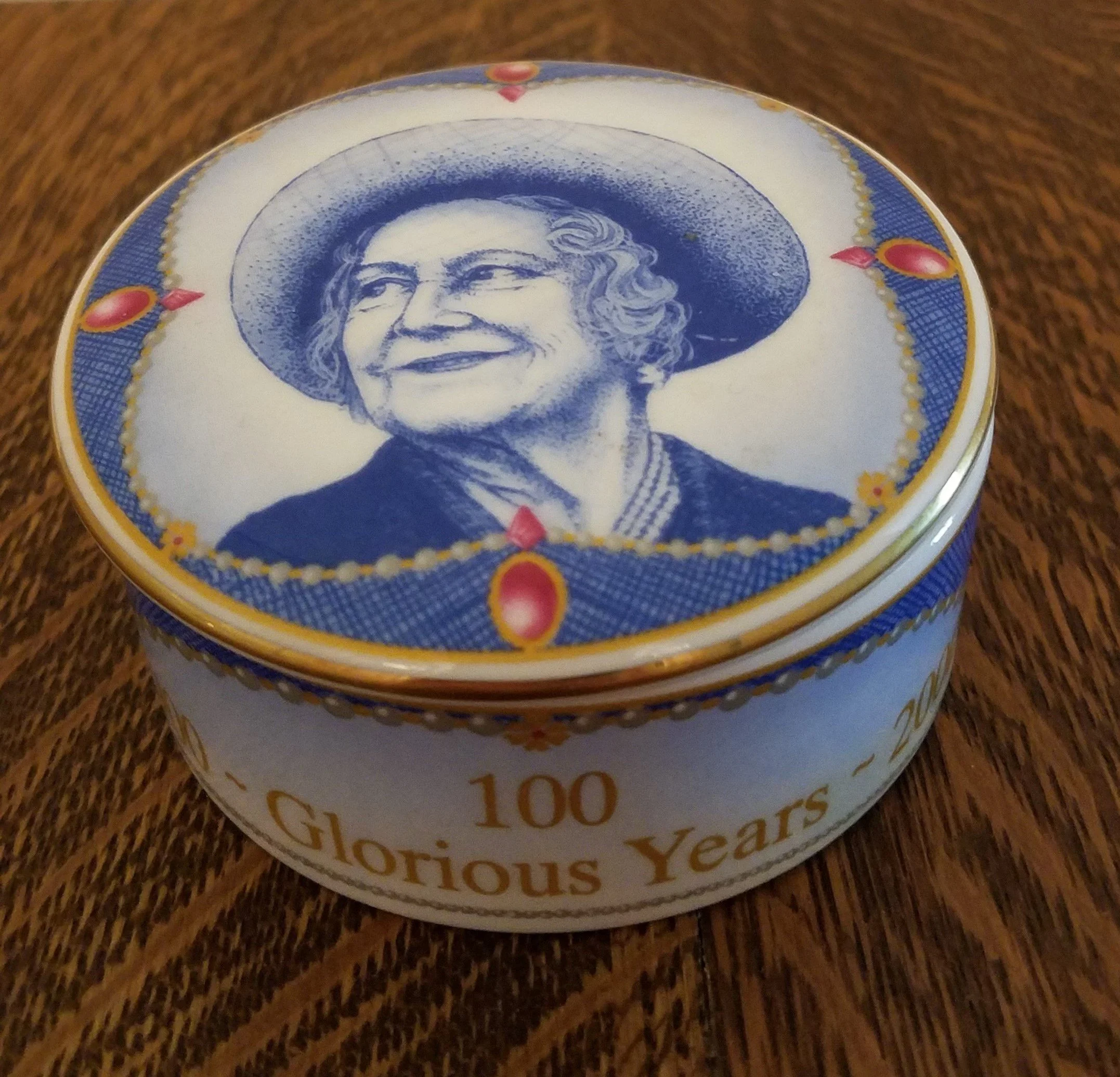Hilary Ward Schnadt
I picked up this covered dish commemorating the 2000 centennial of the birth of England’s Queen Mother at a vintage home goods store I liked to browse. It reminded me of my semester in London during Queen Elizabeth II’s Silver Jubilee year. When I mentioned that to the proprietor, she had her own memories of long-past time in England. Without regular employment there, she sold items at car boot sales to earn some cash and saw that as the precursor to her current shop.
Emboldened by that moment of connection and inspired by a mystery series I’d been reading in which the amateur detective was an antique store picker, I asked her if she needed any picking done. Rummage sales and thrift shops were favorite shopping venues of mine and picking seemed a natural outgrowth of that proclivity. Somewhat to my surprise, she said she did and began walking me around the store, discussing the design aesthetic of what she carried, describing her clientele, and pointing out items that were frequent sellers. Crucially, she also said what she usually paid for them. With that, my brief side hustle began.
At first, I enjoyed the challenge of finding objects that matched the shop’s aesthetic at prices that would enable me to make a bit when selling them to her. And the record-keeping part of me loved setting up the Excel sheet to track what I’d bought, where, when, and for how much, what she paid and when, the profit and loss, and the ultimate destination of the items she rejected. (They went to charity thrift shops in what I came to consider a “catch and release” program within the flow of second-hand goods.)
But the drive to monetize my rummaging diminished my enjoyment of it. And the logistics of a long commute to the city necessarily done on weekday mornings so as to meet with her as the shop opened, which therefore required me to take time off from my own job, and sometimes resulted in having to deal with her co-owner with whom I did not feel a rapport, took its toll. I made a good profit on my finds, but buying for $1 and selling for $3 did not really cover time and travel. The year that my nonprofit employer had budget challenges and I had to take a week of furlough time, I didn’t meet my goal of replacing that income through picking. So, I gave it up. But the dish remains, and now holds memories of this side gig along with the earrings I thrifted for myself.
